GODARD BY SOLANAS. SOLANAS BY GODARD
Jean-Luc Godard and Fernando Solanas
 FORWARD
FORWARD
 DOWNLOAD
DOWNLOAD
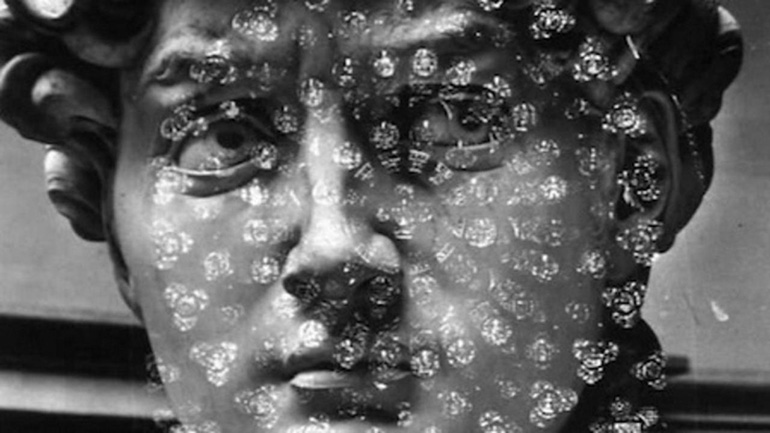
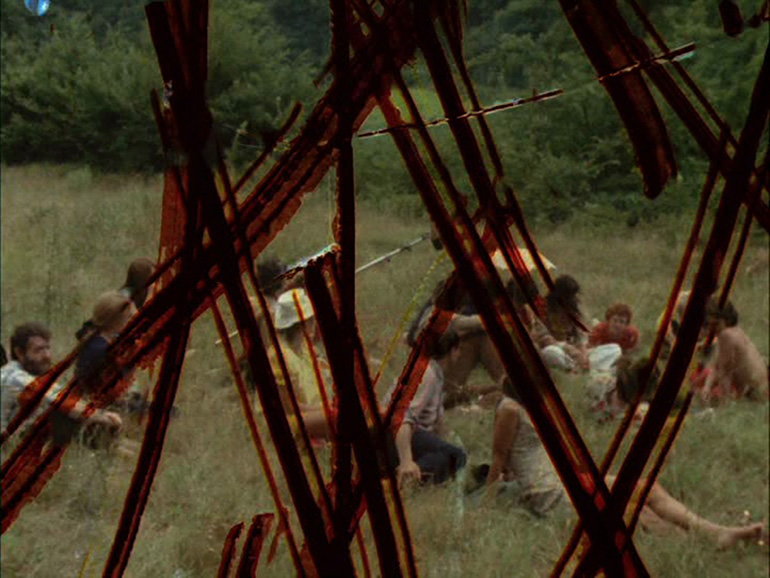
Godard: How would you define this film?
Solanas: As an ideological and political film-essay. Some have described it as a book-film, and they’re right, because we provide, along with the information, aspects to reflect on, titles, didascalic forms, etc. The actual narrative structure is constructed like in a book: prologue, chapters and epilogue. The film is absolutely free in terms of its form and language: we make use of everything necessary or useful for the educational purposes of this work. From live footage and reportage to other footage where the format is typically found in short stories, tales, songs or ‘image-concept’ montage. The film’s subtitle hints in advance that it is a document, serving as evidence of a reality: Notes and Testimony on Neocolonialism, Violence and Liberation. This is a documentary cinema of denunciation, though it is at the same time a cinema of knowledge and research. It is a cinema that contributes, above all through its orientation, because it is not for an audience within the ‘coexistent culture’, instead it is aimed at the huge numbers of people who suffer from neo-colonialist oppression. This applies especially in the second and third part, because the first one tells you what the masses already know, sense and experience, and it functions as the film’s main prologue. The Hour of the Furnaces is also a film-act, an anti-spectacle, because it rejects the idea of itself as film, and instead opens itself up to the public to be debated, discussed and developed. Its screenings come to represent spaces of liberation, ‘acts’ in which individuals become aware of their situation and of the need for a richer praxis to change this situation.
Godard: How does this act take place?
Solanas: The film contains highlighted pauses and interruptions, so that the film and its topics can travel from the screen to the audience; that is, to life, to the present. The old spectator –the one who just sat there passively, according to the traditional cinema that developed the bourgeois concepts of nineteenth-century art– this non-participant becomes a live protagonist, a real actor in the story of the film and in history itself, since the film is about our contemporary history. And a film about liberation, about an unfinished period in our history, must by definition be an unfinished film, a film that is open to the present and to the future of this liberation. That is why the film has to be completed and developed by the protagonists, and we are not ruling out the possibility of adding new notes and film testimonies, if we find new facts that should be added in the future. The ‘acts’ end when the participants decide that they should. The film is the trigger for the act; it mobilizes the old spectator. Furthermore, we agree with what Fanon said: ‘Yes, everyone must be involved in the struggle for the sake of the common salvation. There are no clean hands, no innocent bystanders. We are all in the process of dirtying our hands in the quagmire of our soil and the terrifying void of our minds. Any bystander is a coward or a traitor’. Or rather, this is not cinema-expression, or cinema-communication, but cinema-action, a cinema for liberation.

Godard: How did you produce the film?
Solanas: By working hard and overcoming every difficulty we faced: financial, technical or artistic. The needs of the film determined a certain method and a way of working. Like most recent independent Argentinean films, it was produced using a small team; a few people did all the work. At the same time, I was working in advertising to cover the basic costs of developing and film. For 80% of the film we used 16 mm cameras, and two or three of us directed almost all the technical and production tasks. We also had the generous support of many friends and colleagues and locals; without that, it would have been impossible to produce this four-a-half-hour film.
Godard: The film I have just started, Strike, will be made by four people: my wife will be acting, I will be doing the sound, there will be one cameraman, and his wife will be editing. I’m doing it with this small TV camera...
Solanas: Nowadays, the myth that quality of expression was the property of the industry, of big teams and technical mysteries has been destroyed. We could also say that the progress being made by film technique is liberating cinema.
Godard: What problems did you have?
Solanas: Besides the typical problems you get in every economic production, I could say that the biggest problem we faced was a dependency on foreign cinematographic models. That is, to free ourselves as creators. This dependency, fundamentally aesthetic, on European and American cinema is the greatest limitation of our cinema. And it’s something that cannot be understood outside the cultural situation of Argentina. The official culture in Argentina, the culture of the neo-colonial bourgeoisie, is a culture of imitation, second-hand, old and decayed. It is built on the cultural models of an oppressive and imperialist bourgeoisie. It is a ‘Europe-style’ culture, now Americanized. Thus, most Argentinian films are built on the productive, argumentative and aesthetic model of US cinema or the so-called auteur cinema from Europe. There is no home-grown invention or searching. There’s translation, development and copying. There’s dependency.
Godard: American cinema is a cinema for selling...
Solanas: Exactly, a cinema that is linked to entertainment, to business; it is subordinated and conditioned by capitalist exploitation. All genres, techniques, languages and even durations in modern-day cinema were born out of this profit-oriented approach to production. Breaking with this conception, with this conditioning, was the hardest thing for us to do. We had to free ourselves: cinema possessed meaning if we could use it with the same freedom that a writer or a painter has when they work, if we could work by basing it on our needs. So we decided to take a chance, to try, to search, rather than letting ourselves be conditioned by the ‘masters’ of the so-called ‘seventh art’, who only express themselves through novels, short stories or drama. We began to liberate ourselves from the ‘Viscontis, Renoirs, Giocondas, Resnais, Paveses’, etc. We wanted to find our own style, our own language, our own structure..., one that accorded with our need to establish a communication with our audience, and the need for the total liberation of all Argentinians. That is to say, this search was not just cinematic; it did not emerge as an aesthetic category, but as a category of our own liberation and the liberation of our country. Thus, a film began to develop, a film that relinquished the supports of plot-novel and actor; that is, the cinema of story and feelings, to become instead a film of concepts, thoughts and topics. The fictionalized story gave way to a story narrated using ideas, a cinema to be seen and read, to feel and think, a film of research similar to an ideological essay.
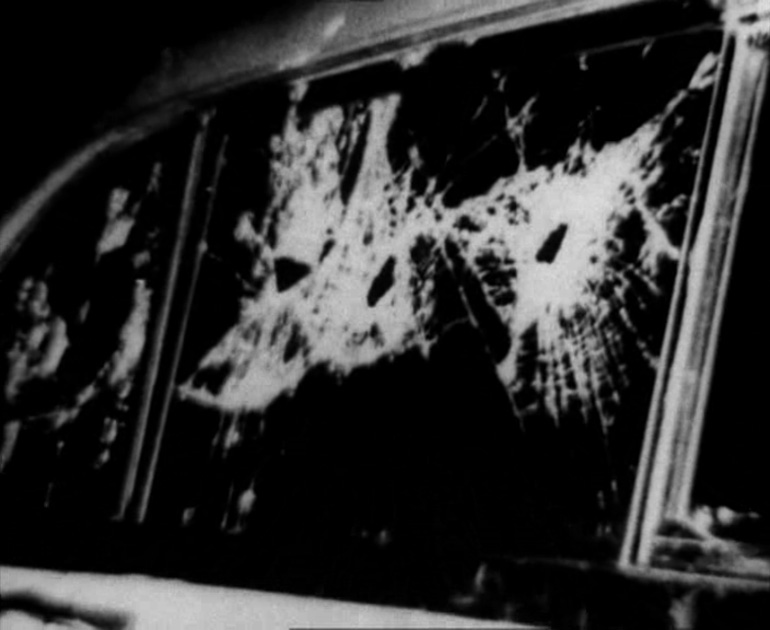
Godard: What is the role of this cinema in the process of liberation?
Solanas: In the first place, to transmit the information that we don’t have. The media, the culture mechanisms, are all in the hands of the system, or they’re controlled by it. The information we have available is what the system chooses to make available. The role of a cinema of liberation is, above all, to produce and spread our information. Once again, I highlight the idea of: what is theirs and what is ours. Meanwhile, the whole conception of our cinema –open cinema, participation cinema, etc.– has one basic purpose: to help set free, to liberate the individual. The oppressed, repressed, inhibited blocked individual. It is a form of cinema made for this struggle. To raise awareness and knowledge among Argentina’s most restless and inquiring levels of society. Can it only reach small groups? Maybe. But what is termed mass cinema only transmits what the system allows, which means that it is just another instrument of escapism, of mystification. The cinema of liberation, on the other hand, reaches small groups, but it reaches them deeply. It comes with the truth. It is better to transmit ideas that can help one single person to free himself than to contribute to the mass colonization of the people.
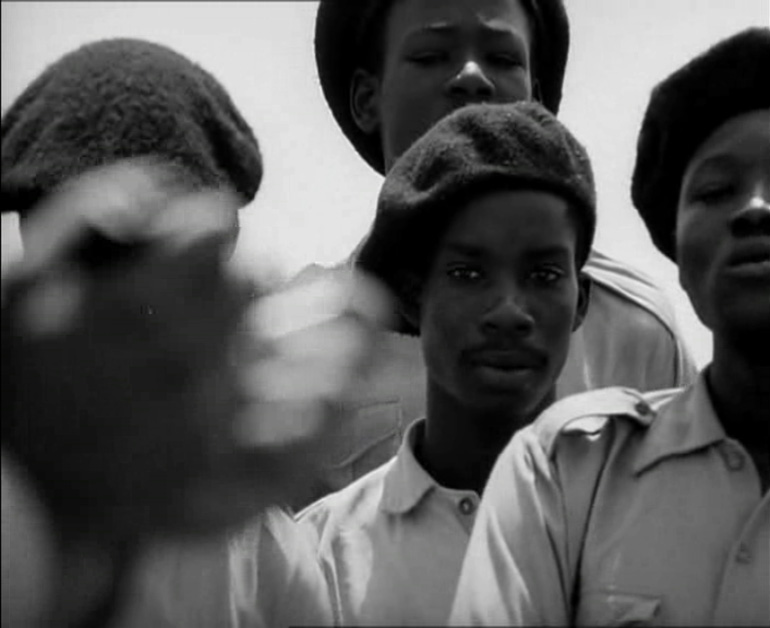
Godard: Cubans say that the duty of every revolutionary is to make revolution. What is the revolutionary duty of the filmmaker?
Solanas: To use cinema like a weapon or a gun, to turn the work itself into an event, an act, a revolutionary action. What is this duty or commitment for you?
Godard: To work wholeheartedly as an activist, to make fewer films and to be more of an activist. That is very difficult because filmmakers here are educated in individualism. But we have to start over in cinema, too.
Solanas: Your experience after ‘May ‘68’ is quite extreme; I would like you to share it with our Latin American colleagues...
Godard: ‘May ‘68’ was a fantastic liberation for many of us. ‘May ‘68’ imposed its truth on us, it forced us to speak and consider problems from another perspective. Before that ‘May’, here in France, all intellectuals had alibis that enabled them to live well, to have a car, an apartment, etc. But ‘May’ created a very simple problem: the problem of having to change your lifestyle, to break with the system. For the successful intellectuals, ‘May’ placed them in a situation analogous to that of a worker who had to abandon a strike because he had a four-month-long debt to the storekeeper. Some filmmakers –like Truffaut– admit honestly that they are not going to change their lifestyle, while some others carry on with their double standards, like the ones at ‘Cahiers’.
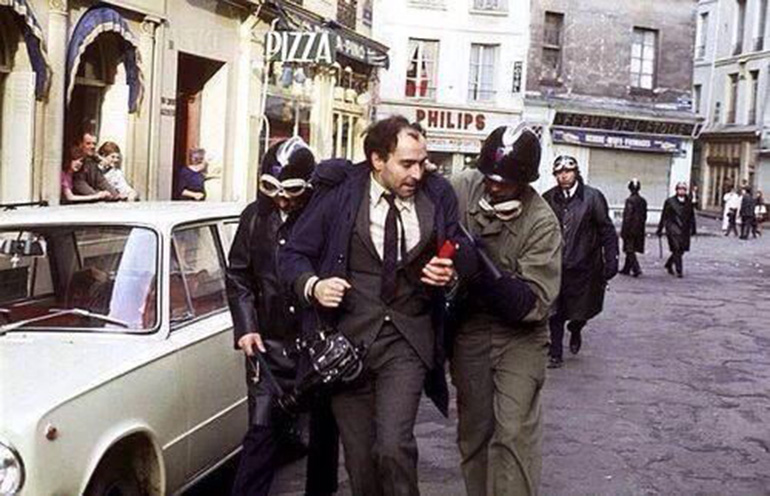
Solanas: Are you still with ‘Cahiers du Cinéma’?
Godard: No, I left it completely ever since they supported the Venice Film Festival (1968) in spite of the boycott declared by the Italian filmmakers. It’s not that I’m against filmmakers meeting up together, but I am against what festivals represent these days.
Solanas: Have you relinquished the benefits the system gave you?
Godard: Yes, I have. I realized that I was oppressed, that an intellectual repression exists which is less marked than physical repression, but it also has its victims. I felt oppressed. The more I wanted to fight, the more they squeezed my throat to keep me quiet. Apart from that, I was also completely repressing myself.
Solanas: Every filmmaker in Latin America suffers from this situation, with the additional problem that now there are tougher censorship laws, and in countries like Brazil and Argentina you can even be charged for expressing certain opinions. The current situation for the filmmaker is so grotesque that our frame of action and our options are now well defined. If a filmmaker explores every topic in depth, whether it be love, family, relationships, work, etc., he reveals the crisis of society, he shows the naked truth. And truth, given the political situation on our continent, is subversive. Thus, filmmakers are condemned to creative self-repression, self-censorship and self-castration. They play an impossible game of either being a ‘creator’ in the system or breaking with it and trying to find their own, independent way. Therefore, there are no options today: either you accept the truth of the system (that is, you accept its lies) or you accept the only truth, the national truth. And this is defined through our works: either complicity with the system, making sterile films, or total liberation...
Godard: It’s true that it’s easier to make a film in France than in Greece or Argentina. In Greece, if you don’t do exactly what the Colonels’ regime wants, they immediately send in the police and the repression. But in France there is a soft fascism which, after ‘May ‘68’, became harder... This soft fascism is the type that sends you back to your home country if you are a foreigner, or it sends you off to some remote place if you’re a professor in the Sorbonne.
Solanas: And so, what’s the situation in French and European cinema?
Godard: I would say that there is no European cinema, it’s just American cinema everywhere. Just like there is no English film industry, only an American industry that works in England; in the same way that you said there is no Argentinian culture, just a European-American culture that operates through Argentinian intermediaries. There’s no European cinema either, only American cinema. In the silent film era, a German film did not look anything like a silent film from Italy or France. Nowadays, there are no differences between an American film and a German or Italian film. There are lots of co-productions: Italian westerns, American films shot in Russia, etc. Everything is domesticated by the USA, everything is Americanized. What do I mean by Americanized? That all European cinema is a cinema made just for selling, for making money. Even art cinema and essay film. This is what makes everything fake. Even in Russia, where films are distributed in film clubs, they’re sold through Politburo bureaucrats. So it’s exactly the same. This means that a film is not born out of a specific analysis of a specific situation, it’s something else.
Solanas: What is it, then?
Godard: Well... it’s an individual imagination, which is sometimes very generous or very ‘left-wing’, which is good, but at the same time it’s made to be sold because it’s the only way this imagination can continue to work and sell. That’s why there are no differences between Antonioni, Kazan, Dreyer, Bergman, etc. and a bad filmmaker like Delannoy, in France. There are differences in quality, but not in content: they all make cinema for the ruling classes. This is what I was doing for ten years, though with a different intention. But I was used for the same purpose.
Solanas: Is the so-called European auteur cinema still a critical cinema, a cinema of opposition and progress?
Godard: At some point it was for every European filmmaker. But then there was a need to go beyond that; however, this evolution did not happen. The notion of the ‘filmmaker’ was a revolution at a time when filmmakers fought against the producers, a bit like in the Middle Ages, when a member of the bourgeoisie fought against an aristocrat. Now the bourgeoisie has become the aristocrat; the filmmaker has replaced the producer. So, auteur cinema is not needed anymore, because it is in itself a cinema for the bourgeois revolution. That is to say, cinema has today become a very reactionary media. Even American literature is much less reactionary than American cinema.
Solanas: So the filmmaker is a category of bourgeois cinema?
Godard: Exactly. The filmmaker is kind of like a university professor.
Solanas: How would you define this auteur cinema ideologically?
Godard: Objectively speaking, it has become a cinema that is an ally of reaction.
Solanas: Can you give me a few examples of this.
Godard: Fellini, Antonioni, Visconti, Bresson, Bergman...
Solanas: And what about the younger directors?
Godard: In France, me before ‘May ‘68’; Truffaut, Rivette, Demy, Resnais... All of them. In England, Lester, Brooks... In Italy, Pasolini, Bertolucci... You know... Polanski... Everybody.
Solanas: Do you think these filmmakers are part of the system?
Godard: Yes. They are and they want to be part of it.
Solanas: And has the more critical cinema been absorbed into the system, too?
Godard: Yes, these films are also absorbed into the system because they are not strong enough in relation to its integrating power. For example, American Newsreels are as poor as you and me, but if CBS offered them $10,000 to screen one of their films, they would refuse because they would be integrated. And why would they be integrated? Because the American television structure is so strong that it absorbs into the system everything that it screens. The only way you could maybe ‘talk back’ to US television would be to screen absolutely nothing for the two or four hours that the television company has paid for specifically to screen and ‘absorb’. In Hollywood they are now getting ready to make a film about Che Guevara, and there is even a film about Mao Tse-tung, featuring Gregory Peck. If those Newsreel films were screened by French television, they wouldn’t be absorbed, at least not completely, because they are foreign products. Similarly, perhaps, my films that are absorbed here in South America retain a certain value.

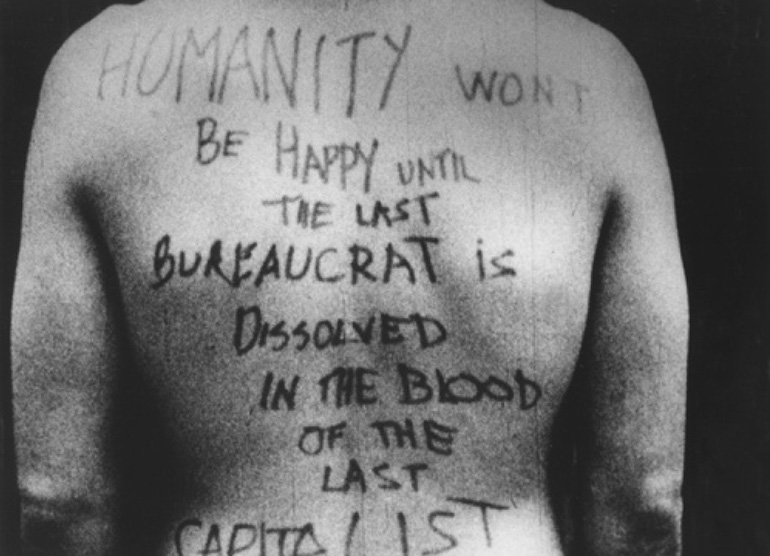
Solanas: I don’t agree with your last point. I think that when a domestically-made film tackles an issue from the oppressed classes’ point of view, when it is clear and deep on the issue, it’s almost impossible for the system to digest. I don’t think CBS would buy a film about Black Power, or one featuring Carmichael haranguing black people about violence, or that French television would show a film in which Cohn Bendit is saying what he thinks. In our countries, many things are allowed when they refer to foreign problems, but when these same problems are international, because they are political, then they cannot be absorbed, either. A few months ago, the Argentine censors banned Eisenstein’s Strike and October. Otherwise, most European auteur cinema that deals with bourgeois problems is not only absorbed into the system, it is also the aesthetic and thematic ‘model’ for the neocolonialized auteur cinema in our countries.
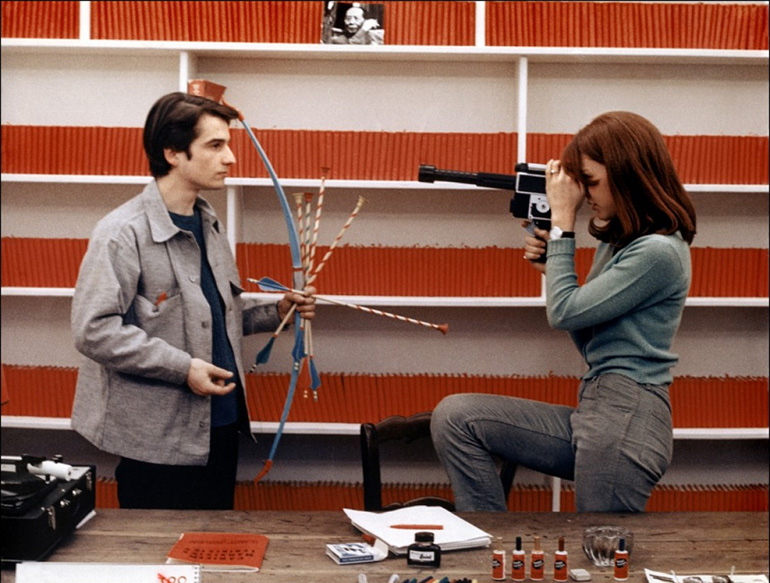
Godard: I agree, but when the political situation here in France becomes difficult for them, they can no longer absorb like they used to. That’s the case with your film, which I’m sure will not be absorbed and will be censored. However, it is not only in the political scene that this absorption takes place, but also in aesthetics. The films of mine that are most difficult to absorb are the last ones that I made within the system, in which aesthetic became politics, such as Week End and La Chinoise. A political posture has to align with an aesthetic posture. It’s not auteur cinema that we should be making, but scientific cinema. Aesthetics should be studied scientifically. All research, both in science and in art, adheres to a political line, even if you are unaware of it. So, there are scientific discoveries and aesthetic discoveries, as well. Thus we should be clear, consciously, about the path we have chosen, and to which we are committed. Antonioni, for example, did good work at some point, but not anymore. He has not radicalized himself. He makes a film about students, like it could be made in the USA, but he doesn’t make a film that comes from the students. Pasolini is talented, very talented, he can make films about issues in the same way one learns to write compositions in school. For example, he can write a beautiful poem about the Third World. But it is not the Third World that wrote the poem. So I think you have to be the Third World, to be part of the Third World and then, one day, it is the Third World that is singing the poem, and if you are the one who’s writing it, it’s just because you are a poet and you know how to do it. Like you said, a film should be a weapon, a gun... but there are still some people who are in the darkness and instead need a torch to illuminate what’s around them. That is precisely the role of theory. We need a Marxist analysis of the problems of image and sound. Lenin himself, when he was involved in film-making, didn’t do a theoretical analysis, but an analysis that focused on production, so that cinema could be everywhere. Only Eisenstein and Dziga Vertov paid attention to this issue.
Solanas: How do you film now? Do you have a producer?
Godard: I never had a producer. I had one or two producers who were friends of mine, but I never worked with regular production companies. When I did it a couple of times, it was a mistake. I find it unthinkable now. I don’t know how others can do it. I see colleagues of mine, Cournot or Bertolucci, for example, who are forced to knock on an idiot’s door and argue with them. They accept that they have to argue with an idiot in order to save their film. But I never did that. Now I am my own producer, and I do it with what I have. I film much more than I used to, because I film in a different way, in 16 mm, or using my small TV equipment. And it’s also different in another way, though it might seem pretentious to use the Vietnamese example. I mean, the way the Vietnamese use the bicycle in combat and for resistance. A cycling champion here could not use a bicycle like a Vietnamese does, at all. And well, I want to learn to use a bicycle like a Vietnamese does. I have a great deal to do with my bicycle, a lot of work ahead, and that is what I have to do. That’s why I am filming so much. This year I made four films.
Solanas: What is the difference between the cinema you used to do and the cinema you’re doing now?
Godard: Now I am trying to make films that consciously attempt to take part in the political struggle. I used to be thoughtless, sentimental... I was a left-winger, if you like, though I started from the right-wing and also because I was a bourgeois, an individualist. Later on, I evolved towards the left, sentimentally speaking, until I was not in the ‘parliamentary’ left, but in the revolutionary, radicalized left, with all its contradictions.
Solanas: And what about your cinema?
Godard: I have always tried to make films that nobody else was making, even when I was working in the system. Now I try to link ‘what nobody does’ with the revolutionary struggle. In the past, my search was an individual struggle. Now I want to know, if I’m wrong, why I am wrong and, if I’m right, why I am right. I try to do what nobody else is doing, because everything that’s being done is virtually all imperialist. Eastern cinema is imperialist; Cuban cinema –apart from Santiago Álvarez and a couple of documentary filmmakers– is half based on an imperialist model. All Russian cinema quickly became imperialist or was bureaucratized, with the exception of two or three people who fought against it: Eisenstein, Dziga Vertov and Medvedkin, who is completely unknown. Now I make films with the workers and I do what they want ideologically, but I also tell them: ‘Be careful!’ It is important that, as well as making these films, they don’t go out and consume the system’s cinema on Sundays. This is our duty and our way of helping in ‘the filmmakers’ struggle’. In short, I have reached the conclusion that, as the situation with cinema is very complicated and confusing, it’s important to make films with people who are not filmmakers, with people who are interested in seeing something on the screen that is related to them.
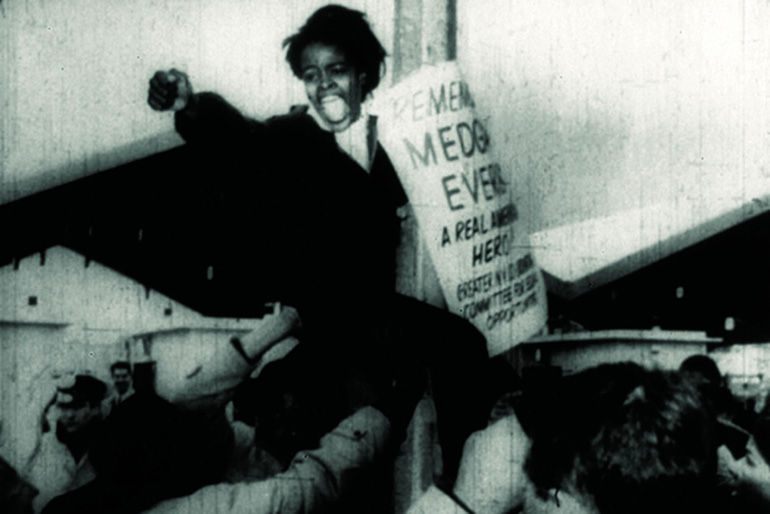
Solanas: Why do you work with people who aren’t in cinema industry?
Godard: Because there are a handful of people in Hollywood or Mosfilm or wherever who impose their language, their discourse, onto the whole population. And it’s not enough to walk away from this group and say: ‘I’m making a different kind of cinema’, because you still have the same ideas about cinema. Therefore, to overcome this, people who have not had an opportunity to make cinematic discourse should have the chance to do so. Something extraordinary that happened during that last ‘May’ in Paris was when people started writing things on the walls. The advertisers were the only ones who were allowed to write on walls. People had been made to believe that writing on walls was dirty and ugly, but I also felt like writing on walls, and I still do, ever since ‘May ‘68’. It wasn’t an anarchic or individualist idea, but a deep desire. We also need to start over in cinema. I made a film in which students were talking to workers, and it was very clear: the students were talking all the time, but the workers never spoke. Workers talk a lot to each other, but where are their words? The words of the people who make up 80% of humanity cannot be found in newspapers, or in films. The minority who speak should be forced to give it up to this 80%, to let this majority express itself. That’s why I don’t want to be part of the minority that speaks all the time, or that makes films; I would rather have my language represent this 80%. And that’s why I don’t want to make films with cinema people, but with people from the great majority.
Solanas: What is the idea behind Strike, your next film?
Godard: It’s about a woman who is talking about a strike. She has a son and that’s why she talks from her home, about what a week on strike is like, and also about the relation between sex and work. Because when someone works for ten hours a day, whether he’s an intellectual or a worker, he can’t make love. And if the woman has to stay at home, then the opposite can happen. This situation poses many problems. In this film we talk about these issues. I am going to film it entirely with my TV camera. It’s very cheap and practical. We can see what we have filmed straight away, both image and sound, without any need for a film lab, or montage, etc. If we don’t like it, we do it again. I’m going to make almost the whole film in a single shot. The work will be in the script, in the dialogue.
Solanas: And how do you screen it later?
Godard: It’s going to be shown on televisions in local bars, in manufacturing areas... We will discuss and talk about it with the people, and this will help us to grow.
Solanas: What is the role of cinema in the process of liberation?
Godard: A fundamental role. Like you said, informing and then, after you give this information, then comes reflection. Films should be clear and simple to help clarify things. And they should be simple films from a technical perspective, because technology is very expensive. If synchronization or montage are very expensive when we are filming, then let’s work using not many shots, or with a voice-over. And if they are unavoidable, let’s just accept them, but let’s also keep in mind that it’s important to simplify. That’s all.
Originally published in Cine del Tercer Mundo, year 1, no. 1, October 1969, pp. 48-63.

